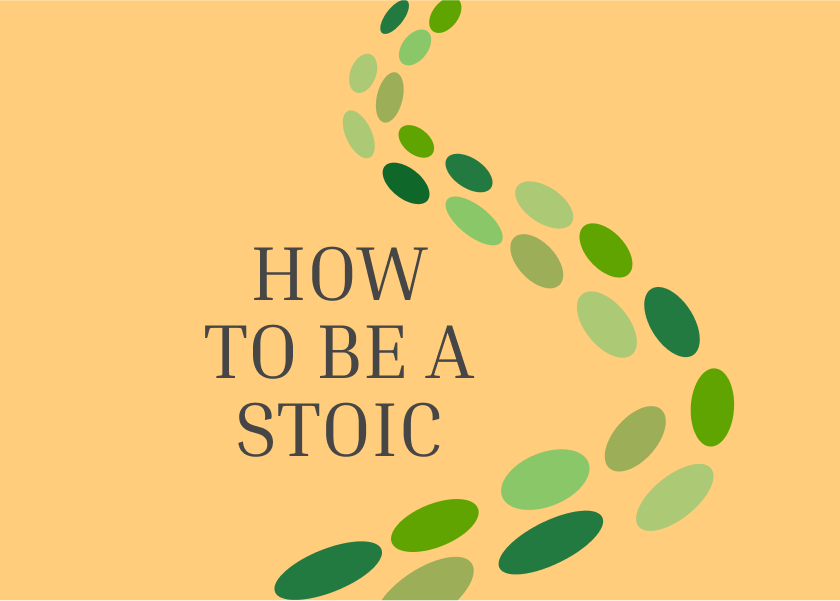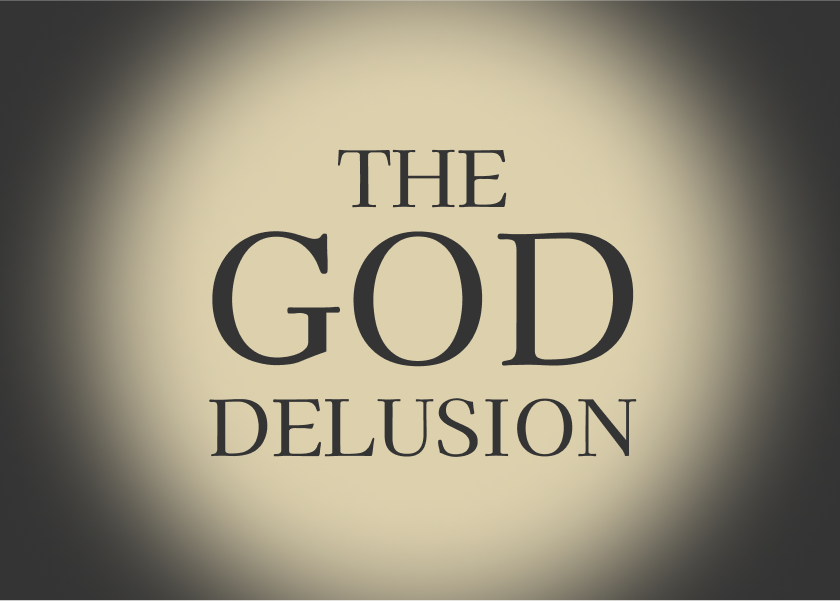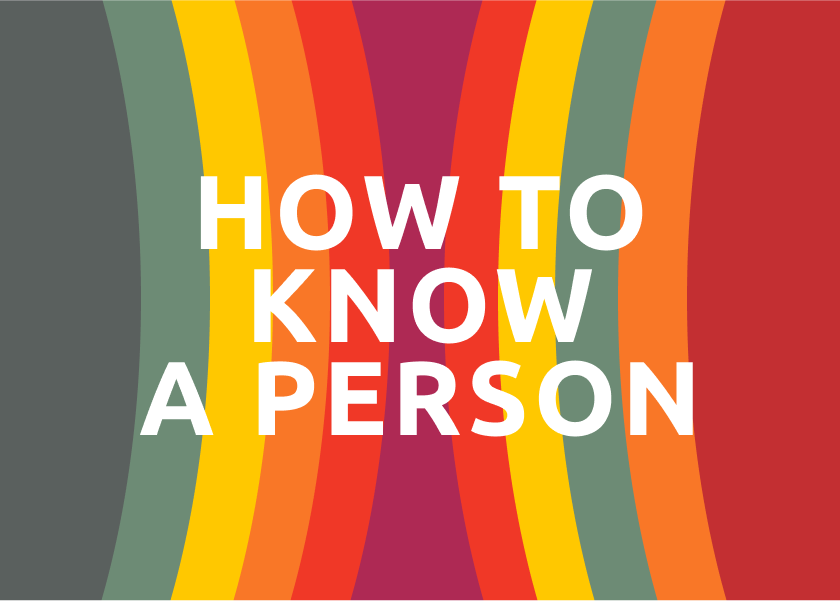How to Be a Stoic by Massimo Pigliucci - Summary
Do you want inner peace, feeling calm whatever life gives you? Well, this book helps you navigate modern life with ancient Stoic wisdom. Learn to control your reactions, find meaning, and live virtuously. Start your journey now!

The following is a summary and review of the book How to Be a Stoic by Massimo Pigliucci.
A Practical Guide to Ancient Wisdom for Modern Life
Are you feeling overwhelmed by the chaos of modern life? Do you find yourself easily frustrated by things outside of your control? Perhaps you're seeking a philosophy that offers resilience, inner peace, and a clear path to living a meaningful life. In How to be a Stoic: Using Ancient Philosophy to Live a Modern Life, Massimo Pigliucci, a scientist and philosopher, offers a compelling and accessible guide to the ancient wisdom of Stoicism, demonstrating its enduring relevance for the 21st century. This book isn't just a historical overview; it's a practical manual for cultivating inner strength and navigating life's inevitable challenges with clarity and purpose. This summary will provide you with a roadmap of Pigliucci's insightful exploration, highlighting the key principles and actionable steps you can glean from Stoicism, potentially saving you time while offering valuable insights into this transformative philosophy.
Contents
- About the Author
- Who Should Read This Book?
- Key Insights and Themes
- Detailed Summary
- Review
- Actionable Takeaways
- FAQs
- Conclusion
About the Author
Massimo Pigliucci is the K. D. Irani Professor of Philosophy at the City College of New York. He holds PhDs in genetics, evolutionary biology, and philosophy, demonstrating a unique interdisciplinary approach to understanding the world. He is a prolific writer, with articles appearing in publications such as the New York Times and the Washington Post, and is the author or editor of ten books, including Answers for Aristotle: How Science and Philosophy Can Lead Us to a More Meaningful Life. Pigliucci also blogs at platofootnote.org and howtobeastoic.org, further engaging with philosophical ideas and practices. His background as both a scientist and philosopher lends significant credibility to his exploration of Stoicism, bridging ancient wisdom with modern thought.
Who Should Read This Book?
How to be a Stoic is an excellent resource for anyone seeking practical guidance on how to live a more resilient, virtuous, and meaningful life. Specifically, this book will benefit:
- Individuals new to philosophy: Pigliucci presents complex ideas in an accessible and engaging manner, making Stoicism easy to understand for beginners.
- Those experiencing stress and anxiety: The book offers concrete strategies for managing negative emotions and focusing on what is within one's control. For instance, someone feeling anxious about a job interview can learn to focus on preparing thoroughly (within their control) rather than worrying about the outcome (largely outside their control).
- People interested in self-improvement: Stoicism is fundamentally about character development and cultivating virtue. Readers looking to become more resilient, courageous, just, and wise will find valuable guidance here. Someone wanting to improve their temper, for example, can learn Stoic techniques for managing anger.
- Those seeking a practical philosophy of life: Unlike purely theoretical approaches, Stoicism offers actionable principles that can be applied to everyday situations. A student facing academic pressure can use Stoic principles to maintain perspective and focus on their efforts.
- Individuals curious about ancient wisdom: The book provides a historical context for Stoicism and explores the teachings of key figures like Epictetus. Someone interested in the history of philosophy will appreciate Pigliucci's engaging exploration of these ancient ideas.
- Anyone looking for a more coherent and meaningful way to understand the world and their place in it: Pigliucci, drawing on his background in science and philosophy, helps readers find a framework for living well in the modern world.
Key Insights and Themes
Here are some key takeaways and main ideas from How to be a Stoic:
- The Dichotomy of Control: This is a fundamental Stoic principle, distinguishing between what is within our power (our thoughts, judgements, desires, aversions) and what is not (external events, other people's opinions, health, wealth). Focusing our efforts on what we can control is crucial for serenity.
- The Three Disciplines of Stoicism: The book is structured around the three core disciplines: Desire (what to want and avoid), Action (how to behave in the world), and Assent (how to react to situations). These disciplines provide a framework for Stoic practice.
- Living According to Nature: This involves understanding human nature (our social and rational capacities) and our place in the cosmos. It means acting in accordance with virtue and reason.
- Virtue as the Highest Good: Stoics believe that virtue (wisdom, justice, courage, temperance) is the only true good, and external things are "indifferent". While preferred indifferents (health, wealth) can be pursued, they should never be valued over virtue.
- The Importance of Character: Stoicism emphasizes the cultivation of a virtuous character as the foundation for a good life. Our character is what truly matters, regardless of our external circumstances.
- Managing Emotions Through Assent: Our emotions are not directly under our control, but our judgements and reactions to external events are. By examining our "impressions" and withholding assent from negative or irrational judgements, we can manage our emotional responses.
- The Value of Role Models: Observing and emulating virtuous individuals can inspire and guide our own moral development.
- Practical Spiritual Exercises: The book concludes with twelve practical exercises derived from Epictetus's Enchiridion to help readers integrate Stoic principles into their daily lives.
Detailed Summary
Chapter 1: The Unstraightforward Path
Pigliucci begins by reflecting on the initial allure of philosophy and how the path to wisdom is often challenging and requires ongoing effort. He shares his own journey towards Stoicism, highlighting its practical appeal in navigating the complexities of modern life. He notes that applying ancient wisdom to contemporary issues is not always straightforward.
Chapter 2: A Road Map for the Journey
This chapter provides an overview of Stoicism, its historical development, and its core principles. Pigliucci outlines the three areas of Stoic study, as articulated by Epictetus: the discipline of desire (dealing with our wants and aversions), the discipline of action (how we behave towards others), and the discipline of assent (how we react to external events). He explains that the goal of virtue is a life that flows smoothly.
Part I. The Discipline of Desire: What It Is Proper to Want or Not to Want
Chapter 3: Some Things Are in Our Power, Others Are Not
This chapter delves into the fundamental Stoic dichotomy of control. Drawing on Epictetus's teachings, Pigliucci emphasizes that we should focus our attention and effort on what is up to us – our opinions, impulses, desires, and aversions – and accept what is not, such as our bodies, possessions, reputations, and external events. He illustrates this with the Serenity Prayer, which echoes this core Stoic distinction. However, Pigliucci also offers a nuanced perspective, acknowledging that even our internal states can be influenced by external factors, and we can exert some indirect control over seemingly external things.
Chapter 4: Living According to Nature
Pigliucci explores the Stoic concept of "living according to nature". He connects this idea to understanding human nature as fundamentally social and rational. He also discusses our place within the broader cosmos, suggesting that aligning our will with the natural order of the universe can lead to greater acceptance and peace. Drawing on Darwin's theory of evolution, he highlights the biological basis for certain human traits and behaviours.
Chapter 5: Playing Ball with Socrates
This chapter uses the metaphor of "playing ball" to illustrate how we should relate to external goods. Like playing a game, we should engage with life's circumstances and resources (health, wealth, etc.) skillfully, but we should not become attached to the outcome. Pigliucci invokes Socrates as a model of someone who maintained inner peace and virtue regardless of his external situation. He also touches upon the Stoic perspective on God and purpose in the universe, acknowledging the diversity of thought within Stoicism on this matter. He introduces the concept of lexicographic preferences, where virtue is prioritised above all else, similar to how one wouldn't trade their child for a luxury car.
Chapter 6: God or Atoms?
Pigliucci further examines the Stoic views on cosmology and the existence of a divine order. He acknowledges the range of beliefs among Stoics, from theistic perspectives to more materialistic views. Regardless of their specific beliefs, Stoics generally agreed on the importance of living in accordance with reason and accepting the natural course of events.
Part II. The Discipline of Action: How to Behave in the World
Chapter 7: It’s All About Character (and Virtue)
This section focuses on the discipline of action and the central role of character and virtue in Stoic ethics. Pigliucci recounts the story of Helvidius Priscus, a Roman statesman who exemplified courage and integrity in the face of imperial pressure. He argues that our character, defined by our commitment to virtue (wisdom, justice, courage, temperance), is what truly matters. He also uses the example of Malala Yousafzai to illustrate contemporary courage. Epictetus's seafaring metaphor reminds us that even small lapses in attention can derail our virtuous path.
Chapter 8: A Very Crucial Word
The "crucial word" Pigliucci explores is amathia, often translated as ignorance or lack of wisdom. Drawing on the ideas of Hannah Arendt and Epictetus, he suggests that much of the "evil" in the world stems not from malicious intent but from misguided views and a lack of understanding. People often act in ways they believe are in their interest, even if those actions are harmful. This understanding encourages a more compassionate perspective on human failings.
Chapter 9: The Role of Role Models
Pigliucci emphasizes the importance of role models in our philosophical journey. He discusses the examples of James Stockdale, who drew on Stoicism to endure captivity during the Vietnam War , and Lawrence Becker, who found strength in Stoicism while living with a severe physical disability . He also shares the stories of modern individuals who have applied Stoic principles to manage depression and autism spectrum disorder. He suggests that we can learn from both historical and contemporary figures who embody virtue and resilience.
Chapter 10: Disability and Mental Illness
This chapter specifically addresses how Stoicism can provide valuable tools for navigating significant challenges such as physical disability and mental illness. Drawing on Becker's experiences, Pigliucci highlights the Stoic focus on what remains within one's power, maintaining agency, and striving for internal harmony despite external limitations . He also discusses how Stoic principles can help individuals manage conditions like depression and anxiety by focusing on their judgements and responses .
Part III. The Discipline of Assent: How to React to Situations
Chapter 11: On Death and Suicide
This section tackles difficult topics, including death and suicide. Pigliucci explores the Stoic perspective on death as a natural and inevitable part of life, urging us to focus on living well in the present rather than fearing the future. He also examines the nuanced Stoic view on suicide as a rational option in extreme circumstances where one's ability to live virtuously is irrevocably compromised, while cautioning against impulsive or irrational decisions.
Chapter 12: How to Deal with Anger, Anxiety, and Loneliness
Pigliucci provides Stoic strategies for managing negative emotions such as anger, anxiety, and loneliness. For anger, he discusses techniques like delaying reactions, examining our judgements, and reframing situations. For anxiety, he reiterates the importance of focusing on what is within our control . Regarding loneliness, he distinguishes it from solitude and suggests that cultivating inner resilience and focusing on our social duties can help mitigate feelings of isolation .
Chapter 13: Love and Friendship
This chapter explores the Stoic perspective on relationships, including love and friendship. While Stoics valued meaningful connections, they also cautioned against excessive attachment to others, recognising that external relationships are ultimately outside our complete control. Pigliucci discusses different types of friendship, drawing on Aristotle's framework, and emphasizes the importance of character in forming genuine connections. He uses the example of a distraught father to illustrate the Stoic approach to dealing with the suffering of loved ones .
Chapter 14: Practical Spiritual Exercises
The final chapter presents twelve "spiritual exercises" derived from Epictetus's Enchiridion and other Stoic sources. These exercises are designed to be practical tools for cultivating a Stoic mindset in everyday life. They include: examining your impressions, remembering impermanence, internalising goals, practicing negative visualisation, and reflecting on your day. Pigliucci encourages readers to incorporate these exercises into their daily routines to make Stoic principles a lived reality.
Review
How to be a Stoicis a highly readable and insightful introduction to Stoic philosophy. Pigliucci successfully bridges the gap between ancient wisdom and modern concerns, offering practical advice that resonates with contemporary challenges. The book's strength lies in its clear explanations of core Stoic concepts, illustrated with historical anecdotes and relatable modern examples. Pigliucci's personal reflections and his engaging "conversations" with Epictetus make the philosophy feel accessible and less intimidating than it might seem. The inclusion of practical exercises in the final chapter is particularly valuable for readers looking to actively apply Stoic principles in their lives.
One potential area for critique might be the level of philosophical depth. While the book provides a solid foundation, readers seeking a more rigorous academic exploration of Stoicism might want to supplement it with other texts. Additionally, some readers might find Pigliucci's occasional personal anecdotes or his framing of certain modern issues to be subjective. However, for the intended audience of those seeking a practical and accessible guide to Stoicism, these are minor points. Overall, "How to be a Stoic" is a compelling and valuable resource for anyone interested in learning how to cultivate inner peace and navigate life's challenges with Stoic wisdom.
Actionable Takeaways
Here’s how to apply these lessons in real life:
- Practice the Dichotomy of Control: Regularly ask yourself what is within your power in any given situation. Focus your energy on your thoughts and actions, and accept what you cannot change.
- Examine Your Impressions: When faced with a strong emotional reaction, pause and question the underlying judgement. Is it based on reason? Is it something truly bad, or just your interpretation?.
- Internalise Your Goals: Instead of focusing solely on external outcomes (like winning a game or getting a promotion), shift your focus to the process and your own efforts to perform your best.
- Engage in Negative Visualisation: Periodically contemplate the loss of things you value (health, possessions, loved ones). This practice can cultivate gratitude for what you have and reduce attachment.
- Reflect on Your Day: At the end of each day, take some time to review your actions and judgements. Identify where you acted virtuously and where you fell short, using this as a learning opportunity.
- Choose Your Company Wisely: Surround yourself with people who inspire you to be virtuous and avoid those who encourage negative behaviours.
- Respond to Insults with Humour: Instead of getting defensive, try to respond to criticism with self-deprecation or a light-hearted remark.
- Practice Gratitude: Regularly acknowledge and appreciate the good things in your life, even the small ones .
- Cultivate the Four Cardinal Virtues: Consciously work on developing practical wisdom, justice, courage, and temperance in your daily life.
- Remember Impermanence: Recognise that everything in life is temporary. This understanding can help you avoid excessive attachment and better cope with loss .
FAQs
- What is Stoicism in simple terms? Stoicism is an ancient Greek philosophy that teaches the development of self-control and fortitude as a means of overcoming destructive emotions; the philosophy holds that wisdom (understanding and living in accordance with nature) and virtue (acting with reason, justice, courage, and temperance) are sufficient for happiness.
- Is "How to be a Stoic" a difficult book to read? No, "How to be a Stoic" is written in an accessible and engaging style, making it suitable for readers new to philosophy. Pigliucci uses clear language, relatable examples, and personal anecdotes to explain complex concepts.
- How can Stoicism help with modern problems like stress and anxiety? Stoicism offers practical techniques for managing stress and anxiety by focusing on what is within our control – our thoughts and judgements – and accepting what is not. By examining our reactions and challenging negative interpretations, we can cultivate greater emotional resilience.
- Is Stoicism about suppressing emotions? No, Stoicism is not about suppressing emotions but rather about understanding and managing them effectively . It teaches us to distinguish between our initial emotional responses and our subsequent judgements, allowing us to choose more rational and helpful reactions.
- Are there any dangers or downsides to practicing Stoicism? While generally a positive philosophy, misinterpretations of Stoicism could potentially lead to emotional detachment or a lack of empathy if not balanced with a proper understanding of social connection and human nature. Pigliucci's book helps to avoid such misinterpretations by offering a nuanced and balanced perspective.
Conclusion
Massimo Pigliucci’s How to be a Stoic serves as an invaluable guide for anyone seeking to incorporate the timeless wisdom of Stoicism into their modern lives. By clearly explaining core principles like the dichotomy of control, the three disciplines, and the importance of virtue, Pigliucci provides a practical roadmap for navigating life's inevitable challenges with greater resilience, clarity, and inner peace. The book’s engaging style, relatable examples, and actionable exercises make Stoicism accessible and applicable to everyday experiences. If you're looking for a philosophy that empowers you to take control of your reactions, cultivate inner strength, and live a more meaningful life, "How to be a Stoic" is an excellent starting point.
As an Amazon Associate, ShelfHelp may earn money from qualifying purchases. Needless to say, ShelfHelp only includes affiliate links to books we recommend and think are worth your time reading.




